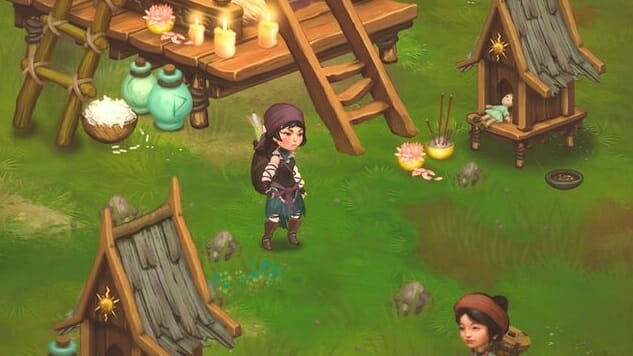Smoke and Sacrifice's Great Story Needs More Structure

I’ve written before that open world sandbox exploration games are no longer enough. As a showcase of what videogame tech can do, they’re great, but by their permissive and directionless nature, they’re not imbued with a sense of purpose. The player may do whatever they wish in them, but rarely is their environment given meaning. Instead, there’s no real value in the gameplay. There’s no sense of purpose.
As open world sandbox exploration titles gained popularity, eventually they came to be combined with crafting and survival games, which too have a tendency to wither under a lack of direction or purpose. This was my issue with perhaps one of the most famous crafting and survival games, Don’t Starve, which I initially enjoyed but grew bored of quickly. Inspired by that indie hit, Smoke and Sacrifice takes many of those same gameplay features and adds a narrative, driving the player’s motivation beyond the thrill of just seeing what they can make next, and giving them a reason to be making all those weapons and healing items in the first place. In other words, it doesn’t just give the player something to do, it gives them a reason to be doing it.
In Smoke and Sacrifice, Satchi must travel to the underworld to find out what has become of her firstborn son, Lio, who was ritually sacrificed to the Sun Cult seven years earlier. One day, during some mysterious event that has removed the sun’s light from the land, she gains access to the underworld and, suspecting that her son is still alive, ventures out to learn of his fate. Traveling through hostile plumes of poisonous smoke, she must use the resources in her surroundings to improvise the means of accessing various patches of elemental landscape, from snow, to fire, radiation, and electricity, helping others who are doomed to this strange place and getting closer to answers about her son along the way.
The grind of Smoke and Sacrifice is familiar to anyone who has played a crafting game. It’s the same process in Don’t Starve that eventually made me feel like I was going through the motions: make an item, use it to gather other items, use those items to upgrade and then create new items, until an entire pyramid of progress can be mapped out from the game’s earliest stages. While this can get repetitive, the cartoonish creep factor in the aesthetic of Smoke and Sacrifice keeps the process interesting. Inspired by everything from paganism, to the Black Plague, to the sooty streets of industrial era England, the atmospheres are dark, even weird. It’s a refreshing change of pace amid all the other lookalike Minecraft-inspired fortress simulators that have come to dominate the genre.







































